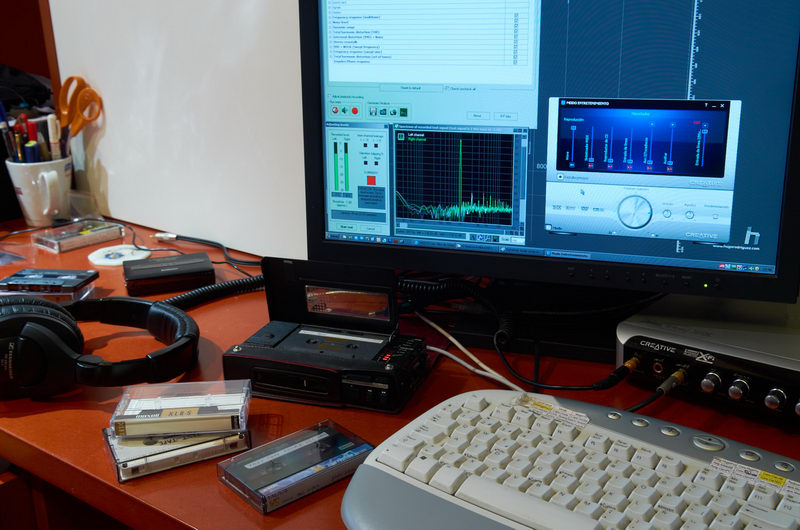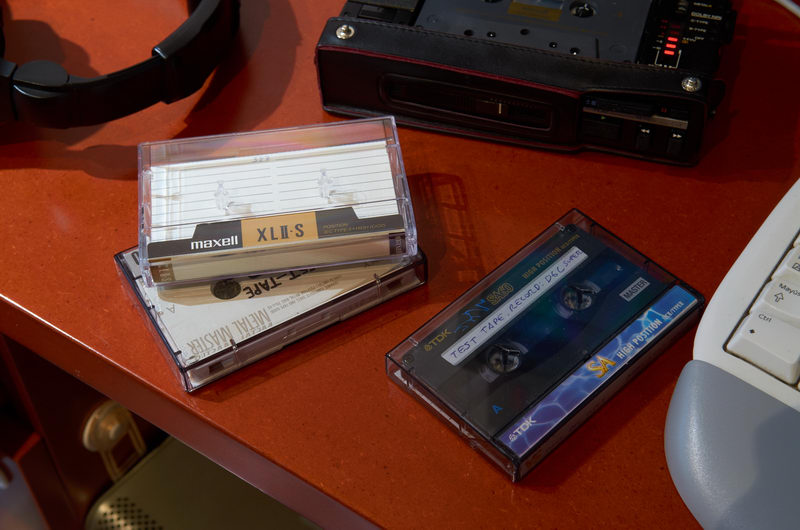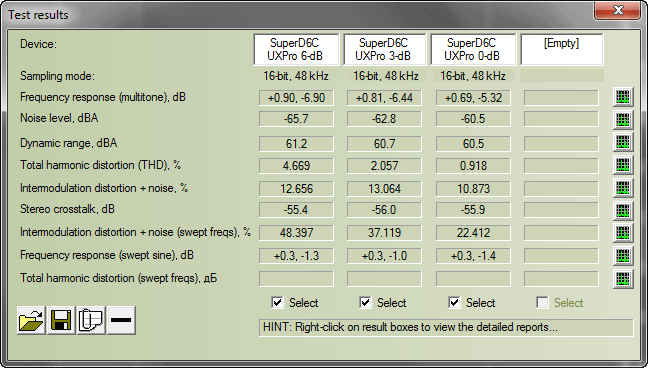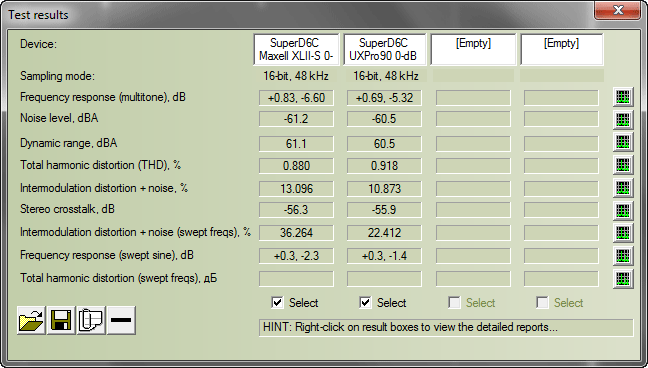|
<<< Back to part I
Preparing the test tape
The first thing I tried to learn is how to adjust the record level on the tape while recording. I know that it has to be as high as it could, but avoiding distortion; this way I can achieve the best dynamic range (DR) and the lowest background noise.
Dr walkman has calibrated my D6C for my usual chrome tape: Maxell XLII-S, which many people say that's an excellent tape, with a very good balance between quality and price. Dr Walkman also suggested me that the TDK SA and UX-Pro are similar and (specially the last one) better, and that he can calibrate for all them (then I started to search for them on eBay so finally I could buy some).

I just wanted to check how much is the UX-Pro better than the Maxell,
so I picked up a Maxell XLII-S clean tape, as I already recorded some tapes on my original D6C and I knew how good does it sound and wanted to know how does it performs actually.

But the first step is to check what's the proper recording level to make the reference tape which will serve as the main test for all walkmans. So I recorded the full RMAA test focusing in the initial calibration signal (1000Hz at -1dB) so it reaches +6, +3 and 0dB in the D6C's VU Meter. After all records were done and all them analyzed, I obtained this result:

Performance of the UX Pro recorded at 6, 3 and 0dB in the Super D6C.
From this window we can see some interesting data:
| - |
The frequency response (explained some paragraphs below) is quite similar in all them. This confirms that the unit used to record and play has a very plain response curve, so it's a recommendable deck for this task. |
| - |
The noise level (explained some paragraphs below) varies accordingly to the record level. The more the record level, the lower the noise. The reason that explains this is that the noise level remains always the same in the tape, but the signal could go higher, so the difference betweem them has become higher. |
| - |
The Total Harmonic Distortion (THD) has become higher with the recording level. Normally it has to be under 1% for good quality. |
So, for this reason I choose to record at 0dB for making my reference test tape. So I recorded the same test in a brand new Maxell and finally I analyzed both them. This is the result of both:

The Maxell XLII-S and SONY UX Pro compared.
In this window there are so many data, but I won't consider all them. For my purposes, I only need the following:
| - |
Frequency response (pink noise), measured in dB |
| - |
Noise level, measured in dBa |
| - |
Stereo crosstalk, in dB |
| - |
Total harmonic distortion (THD), measured in % |
So, how do we know which tape to choose? Well, the main question will be: what does each value means? Not everyone can understand that. I'll try to explain.
|
![]()
![]()
![]()
